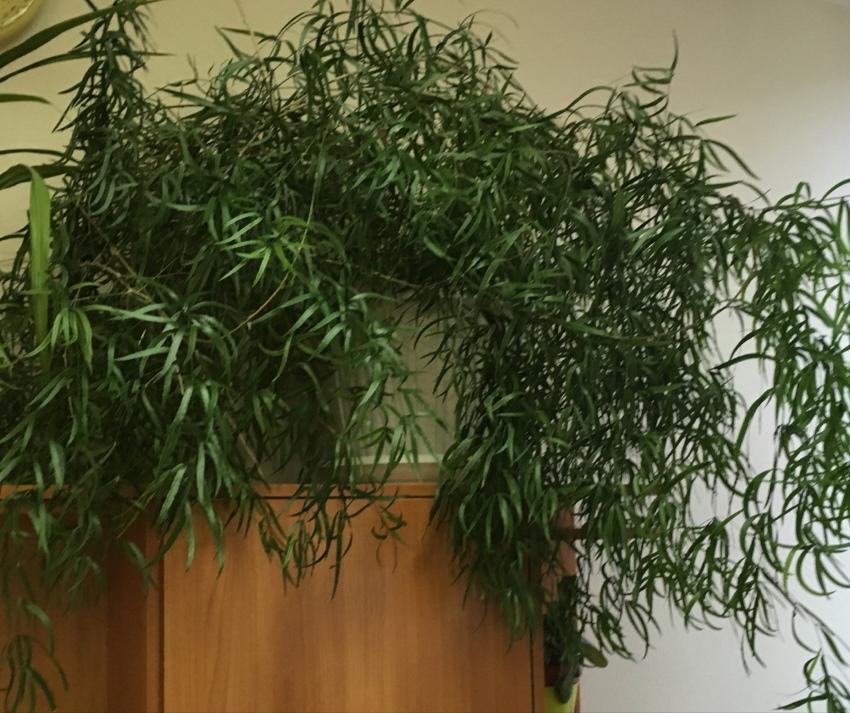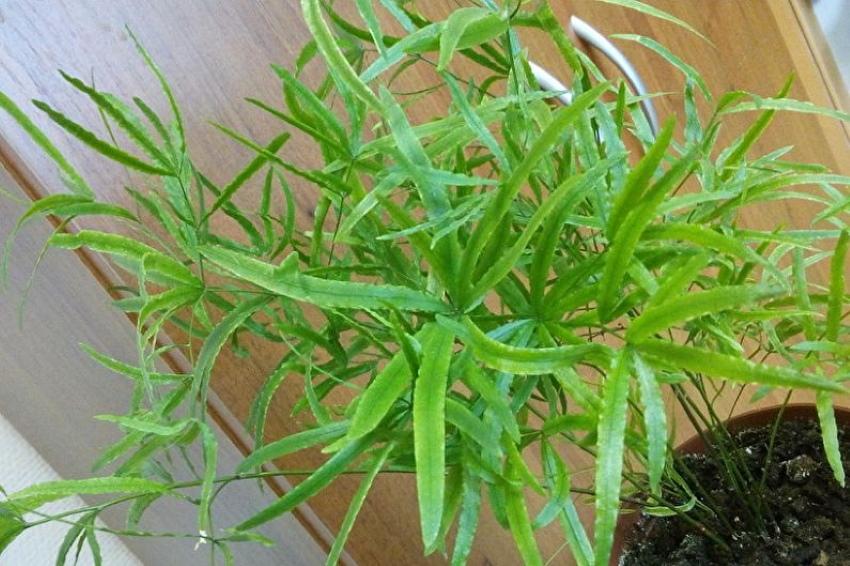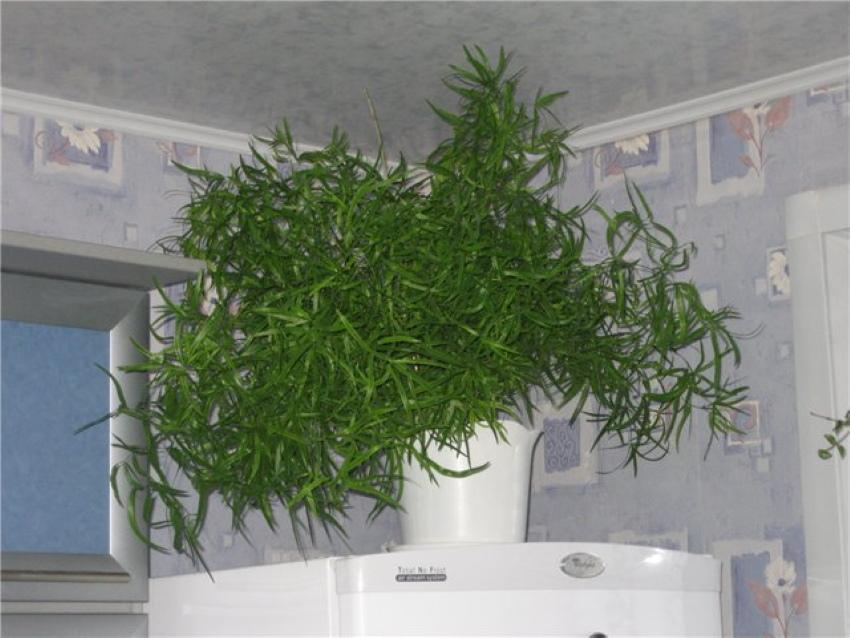Growing crescent asparagus - decorative liana for landscaping a room
 Asparagus are one of the most decorative indoor flowers that can transform a room into a tropical jungle in a couple of years. The rich green color and lush aerial cap are pleasing to the eye, and they are also almost not capricious and can adapt to any conditions. For example, the cultivation of crescent asparagus is within the power of even beginners in the flower business. This curly bush thrives indoors and can grow even in partial shade. Its only requirement is moisture, both in the soil and in the air. If there is enough of it, a gorgeous flower will grow from a small bush within a year.
Asparagus are one of the most decorative indoor flowers that can transform a room into a tropical jungle in a couple of years. The rich green color and lush aerial cap are pleasing to the eye, and they are also almost not capricious and can adapt to any conditions. For example, the cultivation of crescent asparagus is within the power of even beginners in the flower business. This curly bush thrives indoors and can grow even in partial shade. Its only requirement is moisture, both in the soil and in the air. If there is enough of it, a gorgeous flower will grow from a small bush within a year.
Characteristics

The sickle asparagus is one of the rare species of this crop that tolerates pruning well. This will inhibit growth and form a more compact and lush bush. He also grows faster than his relatives.
The plant differs in the structure of the leaves. They grow on the tops of numerous twigs and look like narrow sickles. With a length of 10 cm, the width is no more than 0.5 cm. But the color is very beautiful, emerald.
Asparagus blooms at home rarely and not earlier than it reaches 6 years of age. White flowers bloom at the end of summer and smell tender. They are very small, collected in miniature brushes, no more than a dozen buds in each. If you artificially pollinate them, you can get fruits - small egg-shaped berries with a couple of seeds inside.
Cultivation of sickle asparagus - the subtleties of caring for a fluffy bush
 Lush vine prefers diffused lighting, light soil and a fairly spacious, but not too large, pot. The root system of the plant is powerful and develops rapidly. There must be at least 5 cm to the edge of the container, otherwise the roots quickly fill the container. By the way, they are so strong that they can even break the pot if the bush is not transplanted in time.
Lush vine prefers diffused lighting, light soil and a fairly spacious, but not too large, pot. The root system of the plant is powerful and develops rapidly. There must be at least 5 cm to the edge of the container, otherwise the roots quickly fill the container. By the way, they are so strong that they can even break the pot if the bush is not transplanted in time.
As for the temperature of the content, in the summer it is advisable not to put the flower in a room where it is too hot. The optimal regime for asparagus during this period is about 25 ° C. But in winter, it is advisable to move it to a cooler room, but not lower than 10 ° C. Until spring, new branches will no longer grow and asparagus begins rest.
Caring for sickle asparagus is not particularly difficult, but its moisture-loving nature should be taken into account:
- You need to water the bush often, and also spray it regularly. Periodic showers are also beneficial.
- From spring to autumn, you can feed it once a month with a mineral complex for decorative deciduous plants. More often not worth it, asparagus is growing so quickly.
- If you plan to get a vine, you don't need to do anything. But to get a lush bush, you can prune in the spring by shortening the shoots to the desired length.
- Every year in early spring, it is necessary to transplant the flower into a larger container.
At home, asparagus reproduces most often by dividing the bush when transplanting an adult plant. Cuttings obtained during pruning also root well. If it is possible to get seeds, you can grow a vine in this way, sowing them in the sand.